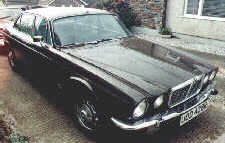
Start with a scrap
MOT failure XJ4.2 - this is a 1976 Series 2 auto
suffering severe chassis corrosion. A manual car would
have been better, and Series 1 cars provide more bits to
donate to the conversion, but S2 autos are plentiful and
very cheap. It helps if the engine is OK, but these too
are very easy to obtain from scrap yards. Registration
documents are needed.
Extract all the
useful bits. Engine (not gear box or prop shaft), rear
axle, front axle subframe, instruments, radiator, etc.
Throw away the rest (a large trash can is needed).
Acquire a manual gear box and clutch assembly, and non-leaking
water pump. Get rear axle track width shortened and front
subframe reassembled upside-down with new springs and
shockers.
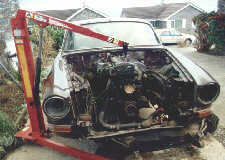
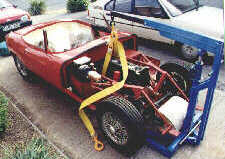
Put all the useful
bits into the new chassis. Working slowly and
methodically build up the engine compartment, and fit
exterior lights and trim. After struggling for hours to
fit windscreen (glass does bend) make sure gear
box output shaft doesn't swing through it whilst dropping
in engine/gear box assembly
Using Series 2
instrumentation it is not practical to build a replica of
the E type dash and cockpit. This car has a custom oak
veneer and vinyl dash, oak veneer door panels, vinyl
seats and grey carpets. Not quite original but
nevertheless in keeping with the sixties style (except
for the radio and immobiliser). The wiring harness
supplied with the kit was barely adequate; this car is
fitted with a sophisticated custom harness in which all
power circuits are relay controlled and incorporate
resettable circuit breakers, accessible from the cockpit.
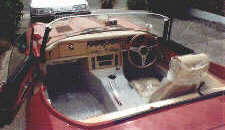
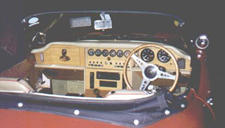
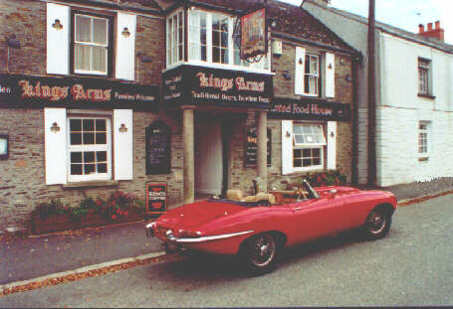
The Kings Arms, Tregony, Cornwall